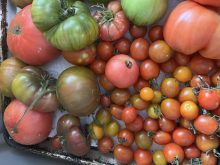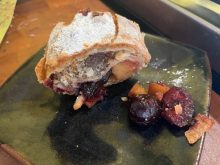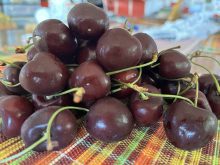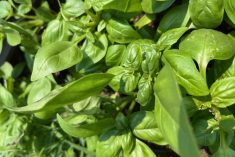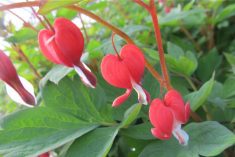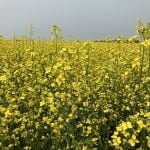How are you doing, everybody? We owe it to ourselves to feel good and have as many of these good days as possible, even though we know some days can be anything but good.
When someone says to me, “Have a good day,” I often respond with, “Those are the only kind of days I like.” When I said that while talking with a woman from the States recently, she said, “Oh, I like that response. Can I borrow your expression?”
A greeting I’ve used at daybreak and in the early morning is “top of the morning to you.” I mostly get a faltering or unsure response. If someone said it to me, I’d answer with “and the rest of the best kind of day to you.”
Read Also
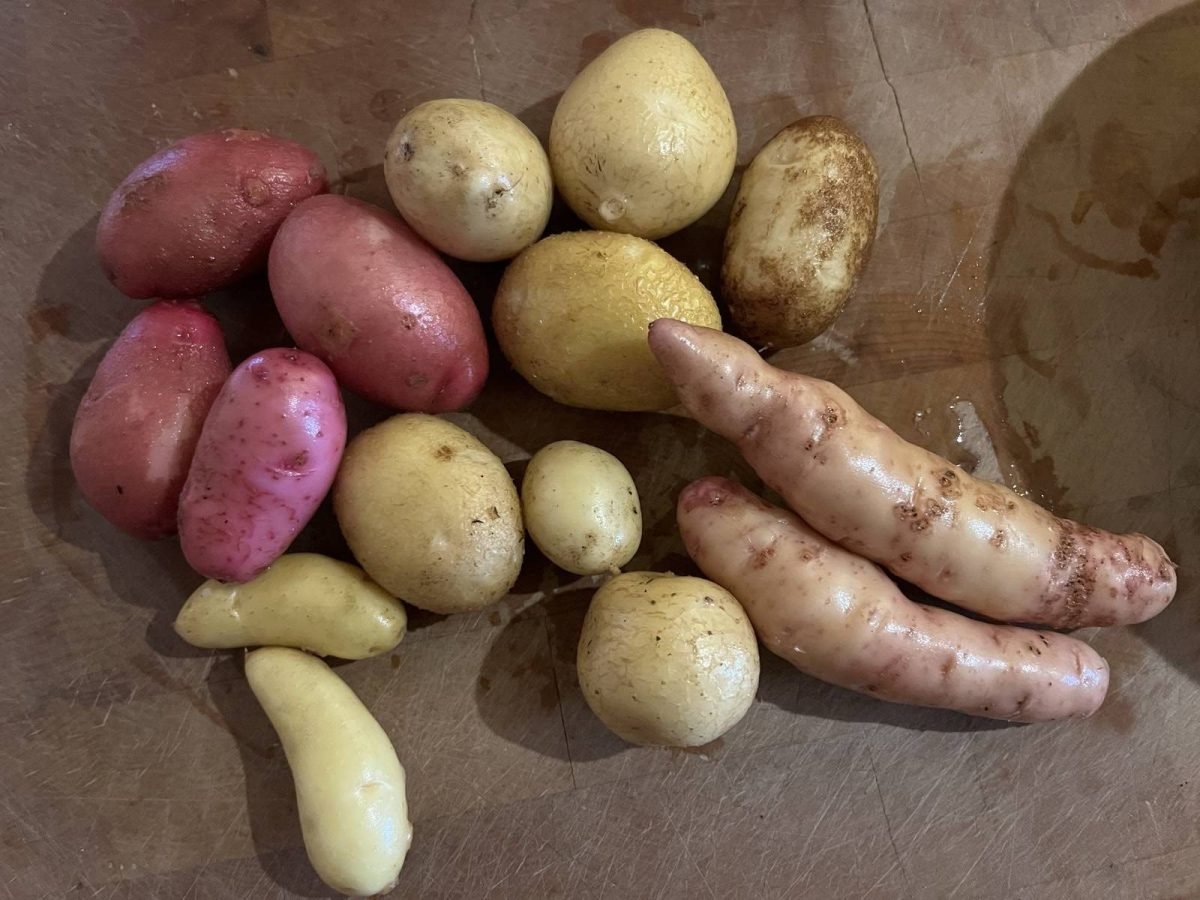
Putting down roots, part 2: Potatoes
Saskatchewan author and chef dee Hobsbawn-Smith offers a retrospective on the potato’s cultural journey from the Americas to Europe and back, and a recipe for butter-basted baby potatoes with rosemary.
On Aug. 26, entertainment was emanating from the main stage at the ninth annual Whoop and Hollar Folk Festival in my hometown of Portage la Prairie, Man. I was in a beautiful sheltered, shady spot, when I noticed a man taking pictures of something moving in the crotch of a tree.
It all happened quickly in the twinkling of an eye. Not long afterwards, we met. Would you like to know more? Well, you shall, but not today. I’m comfortable assuming my Singing Gardener readers are willing wait for the next issue of Grainews to read the full story.
There’s so much to tell about my bird of paradise plant, which I started years ago with seeds obtained from Chiltern Seeds in England. They still have bird of paradise seeds available for purchase at https://www.chilternseeds.co.uk/.
I’m proud to frequently see our national Canadian maple leaf flag flying high, wide and handsome outside a lot of homes, residences and businesses. Keep it up.
My Singing Gardener word show is underway on this Grainews page, with a tip of my hat and a ginormous welcome to all. Made from a combination of the adjectives gigantic and enormous, ginormous is something really, really big.
Bird of paradise
Bird of paradise plants are unique as they’re the only ones in the banana family with flowers known to be pollinated by birds’ feet.
The plants produce ornamental broadleaf foliage and startling, beautiful flowers that resemble a bird on the wing. The most common bird of paradise species, Strelitzia reginae, cast a combination of striking purple, blue, red, orange and yellow colours on each individual bloom. Every multi-coloured flower is supported by large banana-like leaves growing on a sturdy plant spike.
Bird of paradise plants are native to tropical and subtropical areas of southeastern Africa, where they can grow up to 20 feet or six metres tall. As a houseplant in a Canadian home with a moderate level of maintenance, a bird of paradise can easily reach six feet or two metres tall.
Strelitzia nicolai is another superb bird of paradise species. The plants resemble a palm tree and will bear bold white flowers that are distinctively shaped and unusually soft. Both S. reginae and S. nicolai are easily grown as houseplants.
A moderate level of maintenance is required to keep these plants healthy. With filtered sunlight and weekly watering, bird of paradise makes a bold statement, adding a tropical touch indoors.
Indoor temperatures when growing bird of paradise plants should drop no lower than 10 C or 50 F. If you choose to place them outdoors for a few months during the summer, select a well-shaded site with a microclimate that catches heat and has good air circulation. Avoid sites with direct sunlight and strong winds, because they can lead to damaged or stunted plant growth as well as burned leaves.
It’s worth noting all bird of paradise plants are considered toxic to dogs, cats, horses, deer and humans, so exercise caution if you have pets and small children.
You need not often fertilizer for a bird of paradise unless the plant’s appearance tells you otherwise. Something like a 5-5-5 or a 10-10-10 blend applied according to label directions is adequate.
When needed, some pruning will encourage new growth. Remove dead leaves and cut off old flower stalks at the base of the plant.
If your bird of paradise becomes too large and needs a bigger pot, replace old soil with a cactus potting mix. Avoid replanting the bird of paradise too deep in a new pot or it may be slow to flower.
To keep your plant from getting too big, remove outer leaves to reduce the overall size. It’s best to do this in the early spring before new growth begins.
Like its close relatives, bananas and ginger, a new bird of paradise plant can be propagated by cutting a chunk from its thick underground rhizome root stem. Place the rhizome cutting in its own pot of moist cactus potting mix and it will begin growing roots and leaves.
To start bird of paradise plants from seed, patience is needed. It takes two to three months for the seeds to germinate, followed by five or six years of growth before the plant starts blooming. Each seed has an orange-coloured fuzz at one end.
A good year for grapes
The grape clusters are hanging lush and plentiful with berries full of juice. It’s a good year for making grape juice, with all the bonus nutrients from grape seeds included. Even grape leaves are in demand, used to wrap around stuffings with vegetable, rice and ground meat combos.

Fresh grape leaves are often available to buy in season at gourmet and ethnic food shops and at stores with specialty food sections. Grape seeds are processed as food supplements and are sold at health food stores.
Grape juice, especially unfiltered homemade grape juice with little or no sugar, is a drink for the heart with healing power. It is an excellent health-promoting beverage loaded with flavonoids, potassium and other natural trace nutrients.
Scientists are still uncovering mysteries of how grape juice can lower high blood pressure and protect against heart disease and strokes. It’s known to be one of the best protectors against potential cancer-causing chemicals from cigarette smoke, according to doctors, dieticians and herbalists with a focus on food and plant remedies.
Unfiltered homemade grape juice is not the same as what you buy in stores. If your homemade grape juice is too concentrated, you can dilute it with 50 per cent pure filtered or distilled water. Ease into drinking it or you could experience a laxative effect. It takes time for the body to adjust to something new or different.
We’ve all heard of rhubarb slush. You may wish to try grape juice slush for sipping on really hot days. Grape juice slush is made similarly but without adding ginger ale, other soft drinks or store-bought sweetened juices.
Here’s a recipe for grape juice slush that will provide three or four small servings:
3 cups dark grape juice
1 tablespoon sugar, or less to suit
1 tablespoon vanilla (optional)
If you’re not a grape grower yet, it’s never too late to start. Stick with dark blue- and purple-skinned grape varieties that are hardy in Zone 3 or colder Zone 2. Should I write about growing grapes in 2024?




